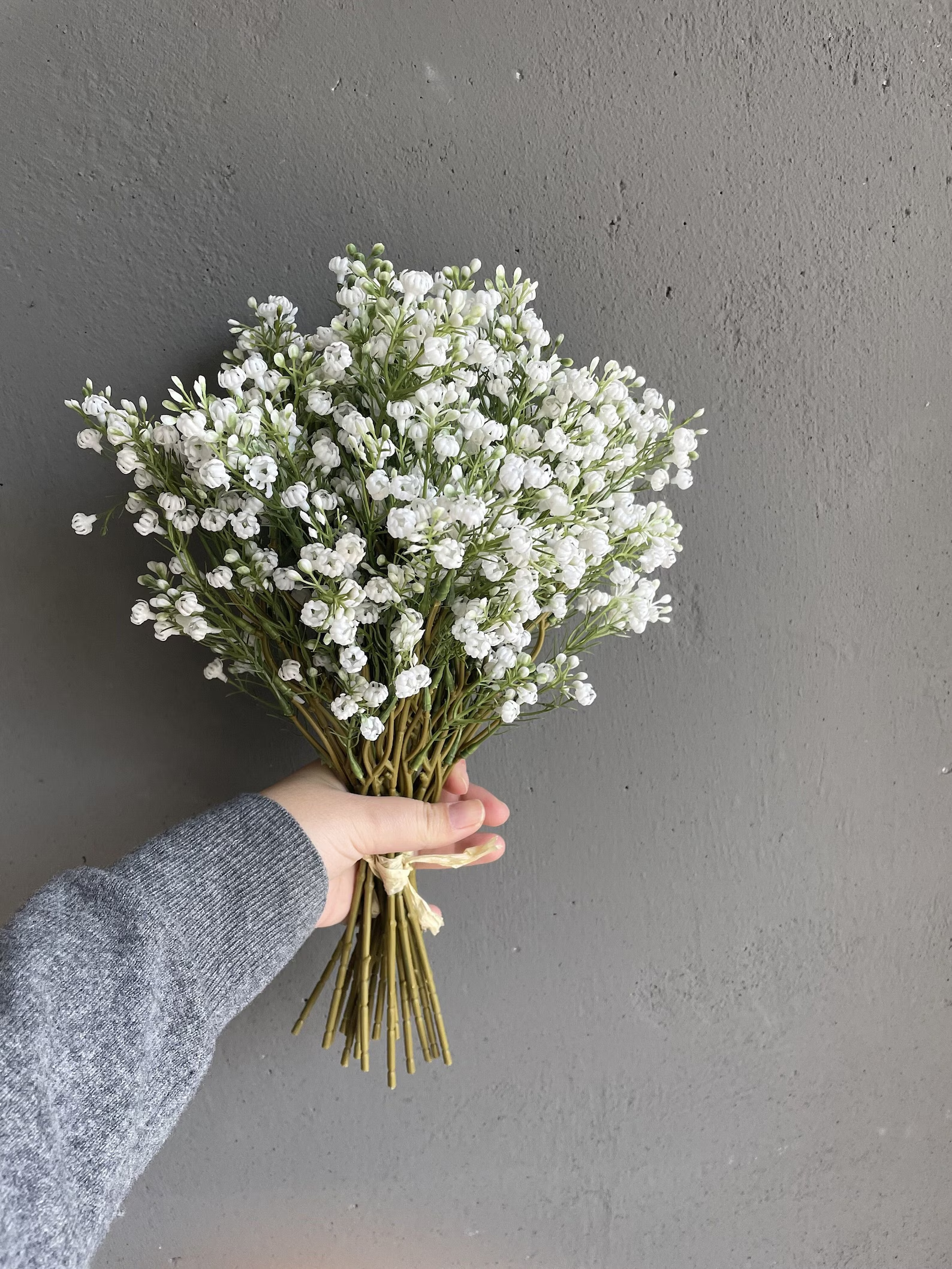How to Plant a Garden: A Step-by-Step Beginner's Guide | Gardening 01
Gardening might feel a bit overwhelming at first—there's soil to prep, plants to choose, and care routines to learn. But don't worry! With a little encouragement and the right guidance, anyone can create a flourishing garden.
In this guide, you'll discover easy-to-follow gardening tips for beginners, learn how to plant a garden from scratch, and nurture a variety of stunning garden plants. Ready to grow? Let's dig in! 🌿
Overview: How to Plant and Take Care of Different Types of Plants
| Plant Type | Planting Time | Sunlight Needs | Watering | Soil Type | Fertilising | Common Problems |
|---|---|---|---|---|---|---|
| Tomatoes | Spring | 6-8 hours | Deeply, 1-2x/week | Well-draining, rich | Every 2-3 weeks | Blight, pests |
| Lettuce | Spring/Fall | 4-6 hours | Regularly, daily | Moist, well-drained | Every 3-4 weeks | Slugs, aphids |
| Herbs (Basil) | Spring | 6+ hours | Regularly, daily | Well-drained | Monthly | Pests, mildew |
| Carrots | Spring/Fall | 6+ hours | Regularly, daily | Loose, sandy | Not usually needed | Pests, forking |
| Zucchini | Spring | 6-8 hours | Deeply, 1-2x/week | Well-draining, rich | Every 2-3 weeks | Powdery mildew |
| Strawberries | Spring/Fall | 6+ hours | Regularly, daily | Well-drained, acidic | ||
| Monthly | Birds, rot | |||||
| Sunflowers | Spring | 6-8 hours | Deeply, 1x/week | Well-draining | Not usually needed | Pests, diseases |
| Lavender | Spring | 6+ hours | Sparingly | Well-drained, sandy | Not usually needed | Root rot |
| Roses | Spring | 6+ hours | Deeply, 1x/week | Well-draining, rich | Every 4-6 weeks | Black spot, aphids |
| Blueberries | Spring | 6+ hours | Regularly, daily | Well-drained, acidic | Every 4-6 weeks | Birds, nutrient deficiency |

Jump To
- Find the Perfect Spot to Plant Your Garden Plants
- Prepare the soil – The Key to Successful Gardening
- Pick the Best Garden Plants for Your Space
- Start small and Focused
- Water Smart to Support Strong Roots
- Weed Regularly to Keep Plants Healthy
- Fertilise Right for Healthy Growth
- Extra Gardening Tips for Beginners
7 Essential Gardening Tips for Beginners
1. Find the Perfect Spot to Plant Your Garden Plants 🌱
When you're learning how to plant a garden, location is everything. Most garden plants thrive in full sun—aim for at least 6 hours of direct sunlight daily. Walk through your yard to spot the sunniest area. Also, check that the soil drains well and you have easy access to water.
- Track sunlight daily – Observe 4–7 a.m., midday, and dusk; note areas with at least six hours of direct sun.
- Perform a drainage test – Dig a 12″ deep, 12″ wide hole and fill it with water. It should drain within 30–60 minutes for ideal moisture.
- Test soil pH – Use a simple test kit to ensure pH is between 6.0–7.0; amend accordingly if outside that range.
- Plan water access – Layout beds or rows within 25 ft of a hose or spigot and ensure no slope traps water.

2. Prep the Soil – The Key to Successful Gardening
Healthy soil means healthy plants. Clear your patch of weeds, rocks, or debris. Loosen the earth with a shovel or tiller, then enrich it with organic compost. This boosts nutrients and improves drainage—essential gardening tips for beginners.
- Clear and loosen soil – Remove all grass, roots, and rocks; dig down 8–12″ with a shovel or tiller.
- Double-dig or stump-loosen – In heavy soil, dig two layers: loosen the bottom with a fork and incorporate compost at each stage.
- Add organic compost– Spread 2–3″ of compost or organic matter over the surface, then mix thoroughly to an 8″ depth.
- Moisten & rest – Lightly water the bed and let it settle for a week to allow organisms to integrate the amendments.

3. Pick the Best Garden Plants for Your Space
Choose garden plants that suit your climate, soil type, and light levels. For those just starting, try easy-to-grow varieties like lettuce, tomatoes, or herbs. These choices give fast results and help boost confidence in gardening.
- Check your USDA zone – Pick plant varieties labelled for your zone and the current season.
- Match plant needs – Group full‑sun lovers like tomatoes and peppers, and partial‑shade followers like spinach in suitable spots.
- Start with easy types – Choose quick-growing, low-maintenance options: lettuce, spinach, cherry tomatoes, basil.
- Space correctly – Leave the recommended gap between plants (e.g., 12″ for lettuces, 18–24″ for tomatoes) to prevent crowding.

4. Start Small and Focused
For beginners, less is more. A compact raised bed or a few containers make managing your first garden easier. This is one of the easiest gardening tips for beginners—grow a little, succeed a lot.
- Define a planting area – Begin with a single raised bed (~4×4 ft) or two containers to stay manageable.
- Sketch a planting map – Draw each bed on paper, marking plant types and spacing.
- Use staggered fills – Mix tall, medium, and low plants (e.g., corn-beans-squash in the "Three Sisters" style) to maximise space.
- Expand intentionally – Add another bed or container only after your initial setup thrives.

5. Water Smart to Support Strong Roots
Young garden plants need consistent moisture, but too much water is harmful. Overwatering can lead to root rot.
Water deeply and infrequently—early in the morning is best. This encourages roots to grow deeper and makes plants more resilient.
- Water deeply – Soak beds until the first 6″ of soil is moist (check by hand).
- Morning schedule – Water early (before 9 a.m.) to reduce evaporation and disease risk.
- Observe soil moisture – Stick a finger into the soil; if only the top inch is dry, don't water yet.
- Adjust for weather – Water less after rainfall; during heatwaves, increase frequency but keep it deep.

6. Weed Regularly to Keep Plants Healthy
Unwanted weeds steal light, nutrients, and water from your garden. Make it a habit to hand-pull or hoe weeds every few days. Applying mulch not only suppresses weeds but also retains moisture—double win!
- Hand-weed weekly – Pull weeds before they flower or seed to reduce spread.
- Apply a mulch layer – Spread 3″ of straw, leaves, or wood chips, keeping mulch away from stems to prevent rot.
- Refresh seasonally – Replenish mulch in spring and after summer to maintain its benefits.
- Use cardboard barriers – Place cardboard under new beds before mulching to suppress underlying weeds.

7. Fertilise Right for Healthy Growth
Use a balanced, slow-release fertiliser or organic compost to give your garden plants what they need. Follow label instructions to avoid overfeeding, which can harm young plants.
- Apply slow-release pellets – Add a balanced granular fertiliser (e.g., 10-10-10) at planting and mid-season.
- Side-dress vegetables – When plants are 4″ tall, add a handful of compost or fertiliser 2″ from the base.
- Feed with liquid nutrients – Use diluted fish emulsion or compost tea every 4–6 weeks in active growth periods.
- Monitor plant health – Yellowing leaves? Cut the fertiliser in half. Excess lush green but no blooms? Add phosphate-rich feed.
- Organic options: Compost and other organic fertilisers are great choices.

GEME, the Best Biowaste Composter
✅ Large Capacity 19L, Quiet, Odourless
✅ Quick (6-8 hours), Microbes Compost, Full Compost
✅ 30-Day Risk-Free Trial, One Year Warranty

Extra Gardening Tips for Beginners
1. Know Your Soil Type
Whether it's sandy, clay-heavy, or loamy, your soil's texture affects plant growth. Add compost to sandy soil, and organic amendments to break up dense clay. Loamy soil is ideal—it drains well and holds nutrients.

2. Invest in Essential Tools
A few good tools go a long way: a hand trowel, weed fork, sturdy gloves, watering can, and pruning shears. They make day-to-day gardening effortless and enjoyable.

3. Handle Pests and Diseases Naturally
Check leaves regularly for pests or fungal spots. Use organic options like neem oil or insecticidal soap. Improve air flow and avoid overhead watering to reduce disease.

4. Embrace Composting
Turn kitchen food waste and yard waste into nutrient-rich compost that boosts soil fertility. Composting is a powerful, eco-friendly gardening technique.
GEME electric composter is the best choice for producing rich compost for your garden in 6-8 hours.

5. Use Companion Planting
Pairing garden plants strategically can naturally deter pests and enhance growth. For example, plant basil alongside tomatoes or marigolds with vegetables to reap mutual benefits.
- Group mutual friends – Plant basil with tomatoes to improve flavour and deter pests; marigolds around veggies to repel nematodes
- Include nitrogen-fixers – Position beans or peas next to heavy feeders like brassicas to enrich soil.
- Balance roots and shade – Combine deep-rooted (carrots) and shallow-rooted (lettuce) plants; tall beans offer support to squash.
- Avoid bad pairings – Don't plant beans near onions, and avoid planting potatoes where squash was last year.

6. Extend Your Season
Start seeds indoors to give your garden an early boost. Use row covers, hoop houses, or raised beds to protect plants from frost and extend growing seasons.

7. Harvest at Peak Time
Harvest vegetables when they're ripe and herbs regularly to encourage fresh growth. Timing matters—pick at peak flavour!

Final Thoughts on How to Plant a Garden
Learning how to plant a garden and integrating effective gardening tips for beginners sets you up for success.
Focus on choosing a good location, preparing top-quality soil, selecting the right garden plants, and giving them consistent care.
Start small, stay consistent, and enjoy watching your green space flourish. Happy gardening! 🌷
Related Articles
Ready to transform your gardening game? Subscribe to our newsletter for expert composting tips and sustainable gardening advice.
